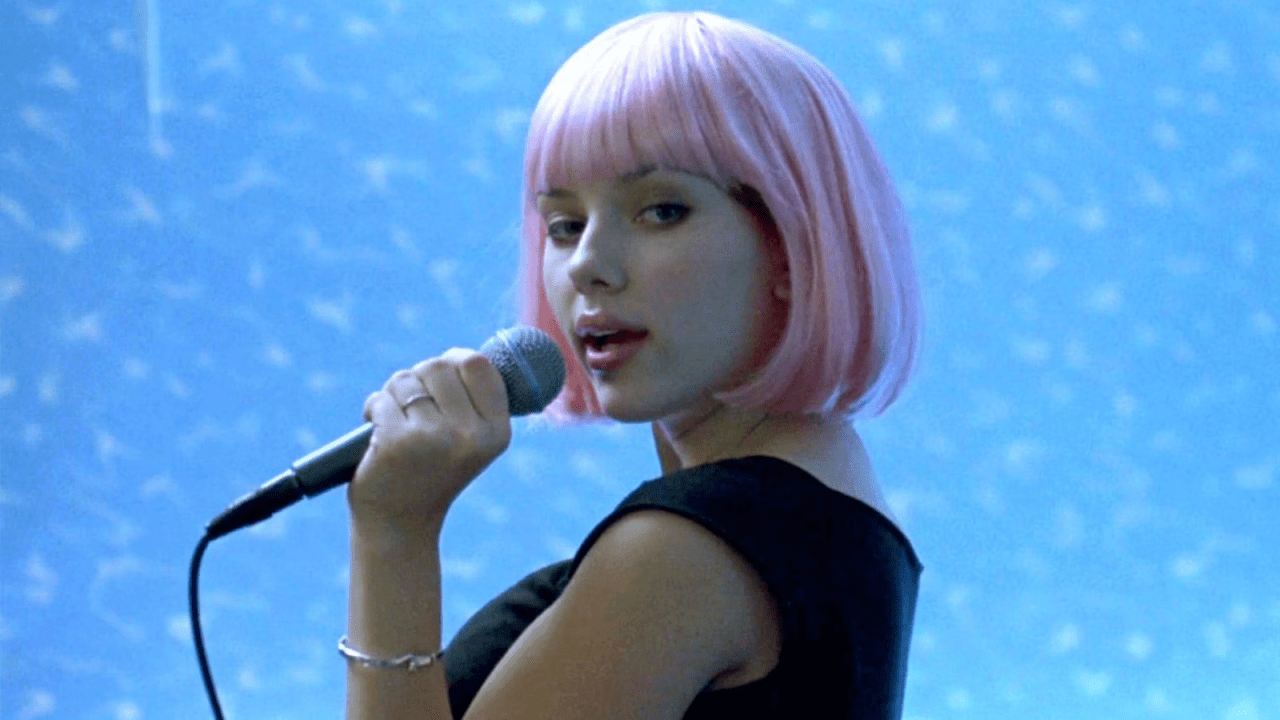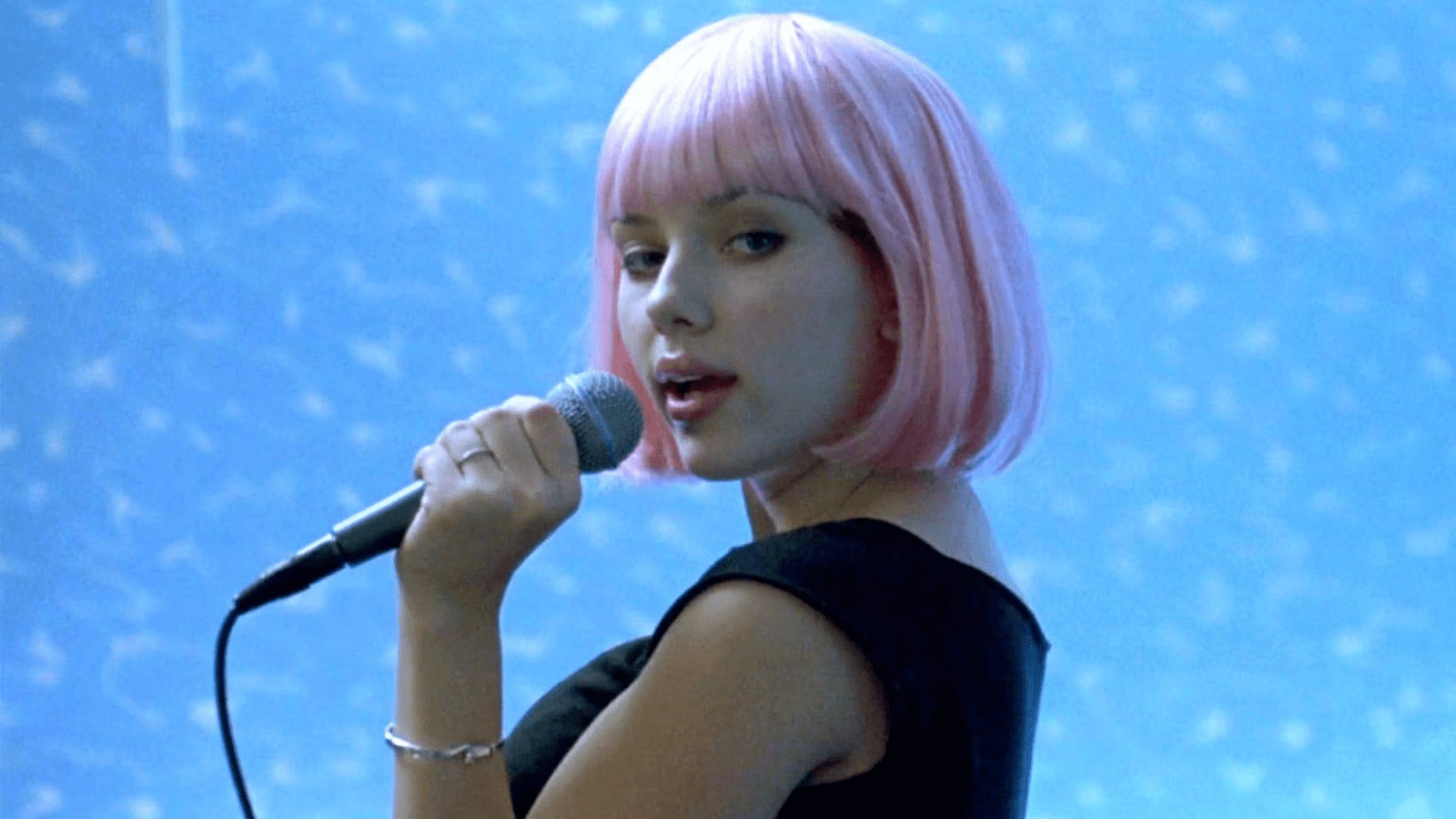You can wait ages for a Japan themed Hollywood film and then three come at once. In an odd spasm of Japanophilia in 2003, Sophia Coppola’s sophomore effort Lost in Translation was swiftly followed by Tom Cruise’s Last Samurai and Quentin Tarantino’s Kill Bill Vol 1. The latter two may have made more money but Sophia Coppola’s film is the most interesting. On its twentieth birthday, Coppola’s vaguely unsettling and still controversial romantic (sort of) comedy is ripe for re-examination.
The plot, if it can be called one, sees Bill Murray as a veteran Hollywood actor in Tokyo to film a Suntory whisky commercial, for which he will earn $2 million. He encounters a bored and temporarily abandoned newlywed Scarlet Johansson in the pristine but sterile, hermetic environment of the Park Hyatt Hotel. With time on their hands, they find themselves drawn to each other and begin exploring their unfathomably strange environment ‘looking for moments of connection’ as the director/writer put it.
Most attempts to capture Japan on film fail either by being stereotypical and predictable (Memoirs of a Geisha), one dimensional and gratuitously violent (Black Rain) or just plain offensive (Rising Sun). When attempts are made to examine and explain aspects of Japanese culture in films the results are frequently unsatisfactory. But Lost in Translation seems to win by not even trying. Tokyo’s quirky culture is used as a device to explore themes of identity and dislocation and raise a few laughs. The weirdness is presented but not interpreted.
Was every detail accurate? No, but most were. There are small vans which ride around during elections containing heavily made-up women repeating the same phrases thousands of times while waving and smiling manically – to no obvious purpose. And the popular TV shows, such as the ‘Japanese Jonny Carson’ featured in the film are as aggressively bizarre and as nauseatingly colourful, almost surreally so, as shown. The odd, cold atmosphere of the sushi bar with the stoical unsmiling master, the vacuous but fun, giggly silliness of karaoke, the nonsense conversations in Pidgeon English, all ring true. Many thought that Lost in Translation captured that Tokyo feeling of permanent disorientation reasonably well.
Not all, though. Some critics grumbled about how the Japanese were presented and the film only received a very limited release. But all I can say is I’ve never met any Japanese person who found it offensive, and most seemed to find it funny. I remember watching the film in a Tokyo cinema and marveling at how the Japanese laughed along as their culture were gently mocked. Why, I wondered, didn’t they laugh when they encountered these things (like the van full of political cheerleaders) in real life? It’s as if seeing their country through the eyes of a foreigner created a safe space where they could acknowledge the comical aspects of their own culture. Some seemed to find it cathartic.
But does Lost in Translation revel in the wackiness of Tokyo? Does it overdo it? For Roger Ebert, who loved the film and thought Murray’s performance (much of it improvised) one of genius, the question is irrelevant. He saw Tokyo as a minor character in a film about of stuck lives, of loneliness shared and connections made. The only comment the film seems to make about its setting is that its strangeness is strangely productive, engendering introspection and opening the heart and the mind to new possibilities and connections.
You don’t hear so much of the criticism now and, like a good Suntory whisky, the film has aged pretty well. Special screenings have been arranged in Japan to mark the twentieth anniversary. Lost in Translation tours are available and popular and you can order the signature pink-hued ‘L.I.T’ cocktail at the American bar at the Park Hyatt featured in the film. The film now has the added appeal of short-term nostalgia – Tokyo was a livelier and freer sort of place in 2003, and Japan (post a successful FIFA World Cup) still fancied itself to be on the up. Not many feel that way now.
It is hard to imagine the film being made today. More strident accusations of stereotyping or racism might be levelled at anyone venturing into this tricky cultural territory (Oppenheimer still hasn’t been released here). And the city has changed, Tokyo, and especially Shibuya where key scenes were shot, is a building site now, a forest of high-rise office blocks and homogenous shopping malls. Finding the quiet locations and recapturing the intimacy of the 2003 film might be hard.
Would Tokyo still be the right setting for an exploration of dislocation and alienation? Perhaps, but it is a less confusing place now than it was in 2003. English signage has improved, and with everyone on their smartphones, using the same apps, watching the same news, playing the same games, there is less of the quirkiness, fewer eccentrics. It’s harder to get lost these days.








Comments